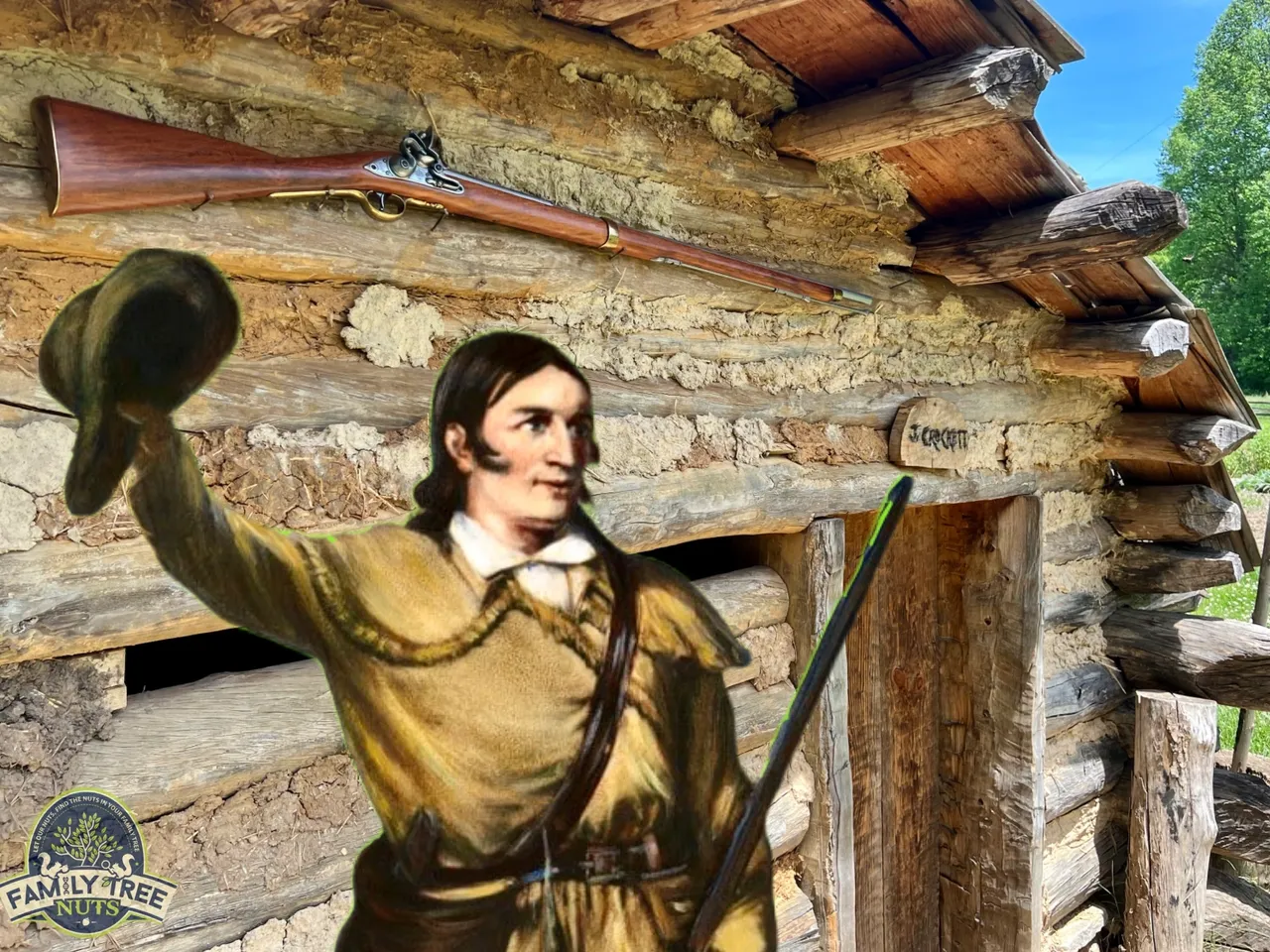
The Davy Crockett Story
He was known as the “King of the Wild Frontier”, a soldier, a politician in the Tennessee Legislature, a politician in Washington D.C., an indian fighter, a wild game hunter, a prolific storyteller, an author, and the original Tennessee Volunteer! Davy Crockett! Many remember watching Disney on Sunday nights with Fess Parker playing Davy Crockett and Buddy Epson playing his sidekick, George Russell, who is also known in the T.V. world as Jed Clampett, on the Beverly Hillbillies. Today in Greene County, Tennessee, is the Davy Crockett Birthplace State Park, and the location has a well-done recreation of the Crockett homestead, and it gives you a little insight on what it was like living in the Appalachian wilderness. They have a little replica of the cabin, a barn, and some pens where some of the animals were kept. It’s a great side trip to make if you’re ever in East Tennessee, especially in the Gatlinburg area, as it’s only about an hour from there.
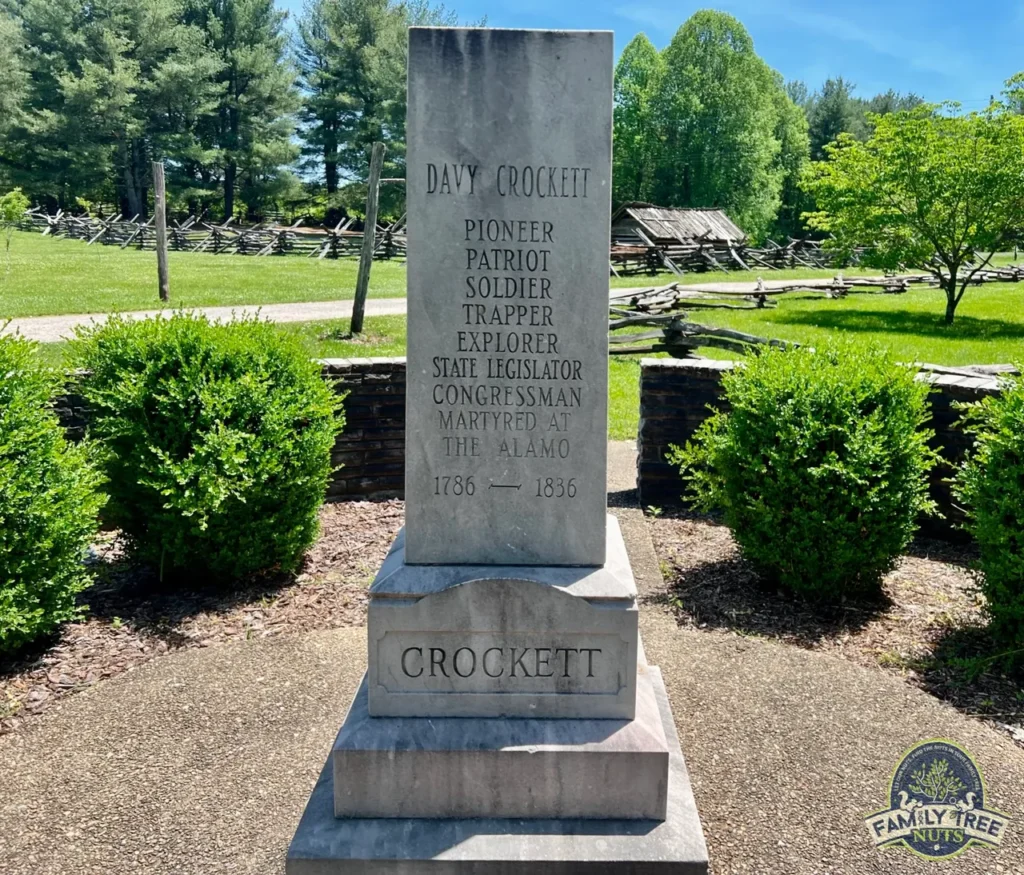
According to Davy’s own recollections later in life, he was born where the Limestone Creek flows into the Nolichucky River, and the exact location of his cabin has been identified. The Crockett family came there to live in the Nolichucky Settlement, which was settled by the pioneer Jacob Brown, who had leased the land from the local Cherokee Indians. Then, this area became known as part of the State of Franklin, then Greene County, North Carolina, which later became, Greene County, Tennessee. The Crockett family was very well known in the area, as John Crockett, Davy’s father, was a local magistrate. He was also a land speculator and a farmer. However, he wasn’t a very good businessman, and he didn’t have a lot of success.
During these years, The American Revolution was raging back across the Appalachian Mountains in the American colonies. On the frontier, families had banded together to form their own security against Indians and others who might attack their settlements. The British government signed an agreement with the Cherokee that stated that settlers would not come west of the Appalachians. The British army knew they were there, knew they were settling illegally, and knew that they were patriots.
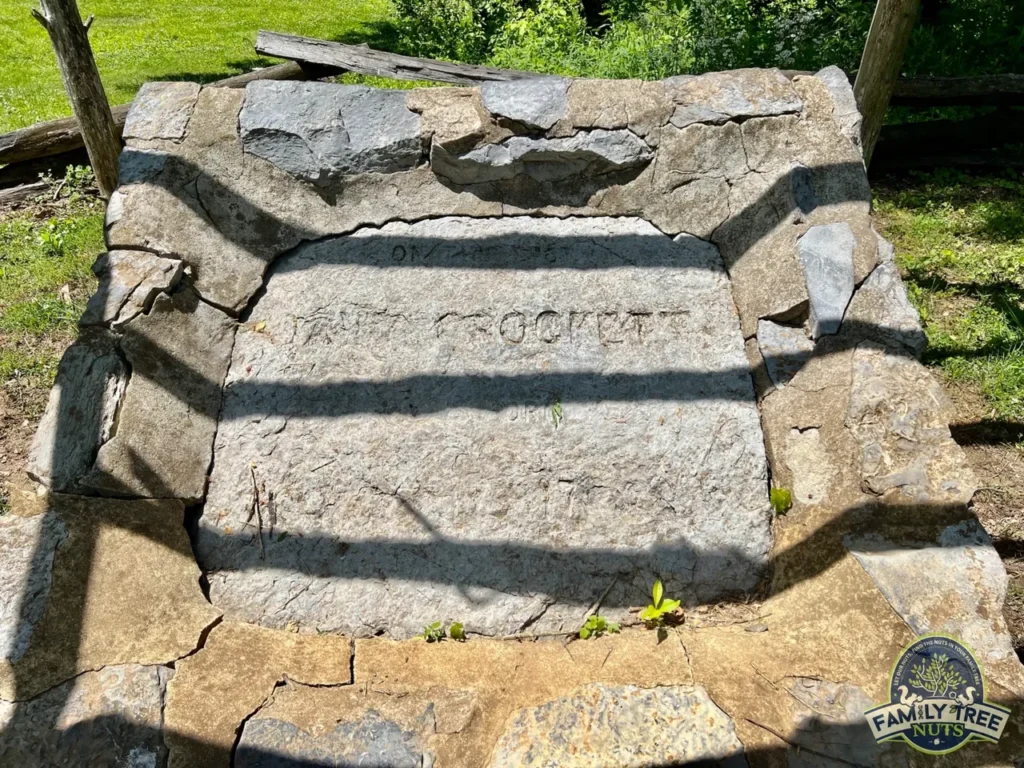
British Army Major Patrick Ferguson referred to them as rebels, and he told them if they didn’t lay down their arms, swear allegiance to the crown, that he would come burn their settlements, and hang their leaders. Needless to say, these frontiersmen here were hardy folks, and they were not going to wait for the British army to come across the mountains, burn their settlements or try to drive them out. They had worked hard to cross these mountains and establish these settlements in the wilderness and they were not going to sacrifice what they had done without a fight. John Crockett, along with 1,200 other men gathered at Sycamore Shoals, and they crossed back over the Appalachians. Ten days later, they meet the British army and a Tory force at the Battle of Kings Mountain. During the battle, Major Ferguson was killed and the rifle that was used to kill him is located in the Tennessee State Museum in Nashville.
After this decisive battle, they became known as the “Overmountain Men”, and next they defeated the British forces at the Battle of Cowpens. The British Army found itself with a lack of supplies, which caused them to retreat back into Virginia and abandon their campaign in North and South Carolina. The battles at Kings Mountain and Cowpens hastened the end of the American Revolution, and soon thereafter, British General Cornwallis was trapped and defeated by the George Washington’s Army with help from the French.
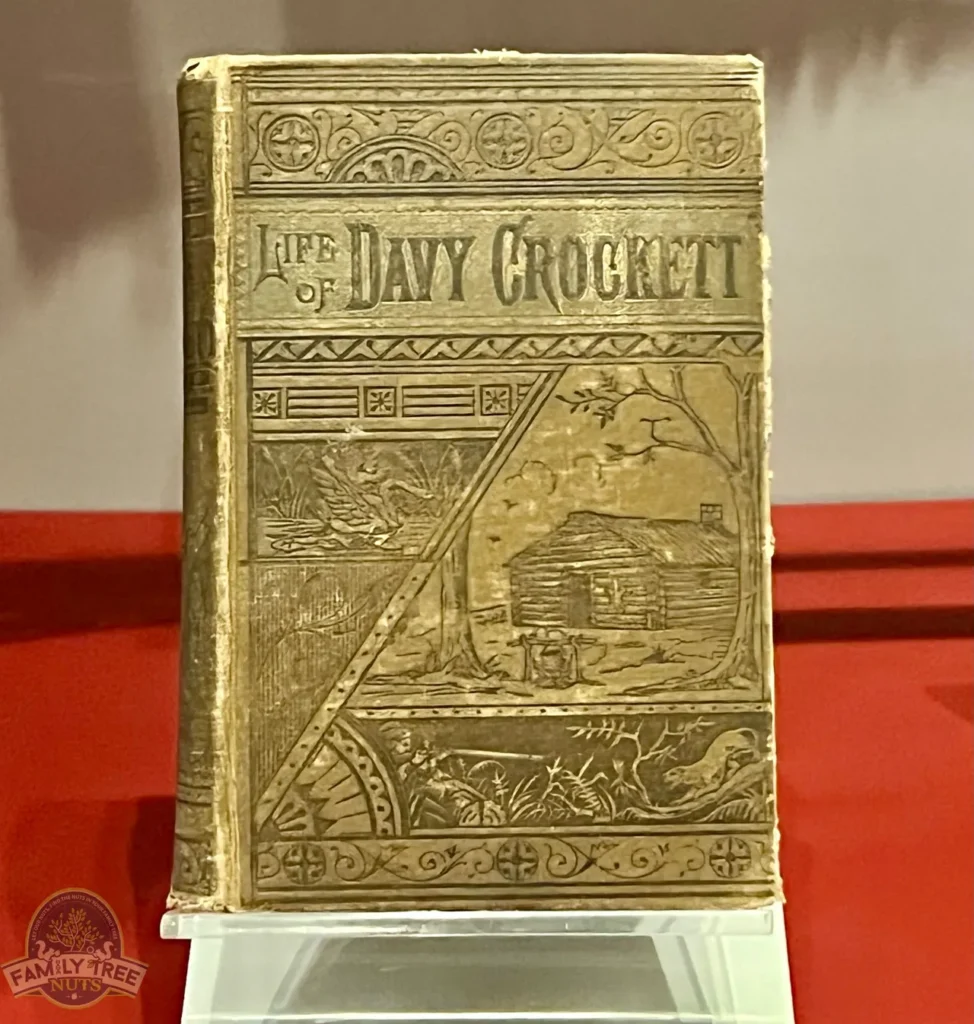
After those battles, John Crockett, and the Overmountain Men returned to the western side of the Appalachians to their settlements to get on with their life. In 1786, the soon to be legend Davy Crockett was born. In 1792, while Davy was still a young boy, the Nolichucky River flooded the whole bottom land where the Crockett cabin was located and destroyed the homesteaded. This caused the Crockett family to consider moving to another area, and about this same time, a new stagecoach road was being built from Knoxville, to Abingdon, Virginia, and to all points east. In 1794, the Crockett family decided to leave Nolichucky Settlement, and move about 30 miles away, down on that new road, and open up a tavern and an inn, which is now in what is known as Morristown, Tennessee. That site today, is an interesting place to visit, and again, if you’re in this area, you can see it and Davy’s birthplace, all in one day. The location has a recreation of the tavern and the inn, which is a great example of what it was like to live on the old turnpike’s back in the late 1700s. It was a weather-beaten, leaky, musty, smoke filled cabin along the side of the road, where people would stop to spend the night. There was a constant stream of settlers coming from the east to the west and bringing goods that the frontiersman needed. There was also a flow of people going back to the east, taking cattle animal skins, and produce to sell.
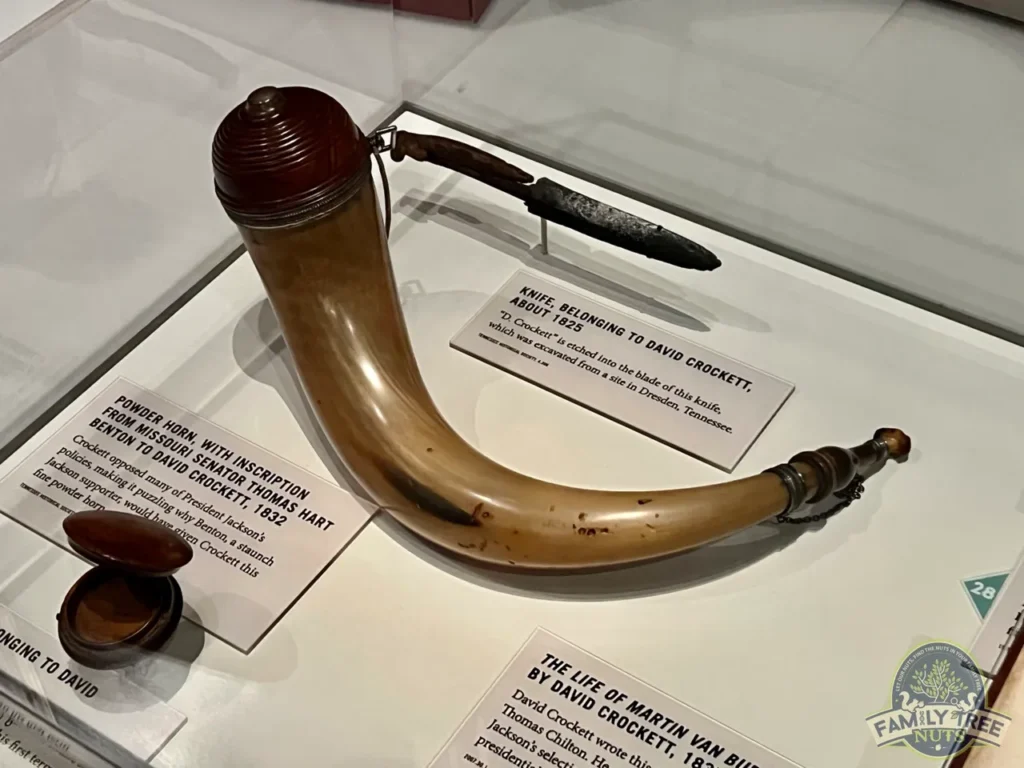
Shortly after John Crockett and his wife opened the inn, he was heavily in debt. John indentured his son Davy out to a local cattle company that was conducting about 400-mile cattle drives into Virginia. When Davy returned home he enrolled in school, but that didn’t work out very well for him. Davy was more of an adventurer than a scholar so he often skipped school, and one day he got caught. Rather than face his father’s wrath, he went back to the cattle drives where he spent the next few years. It was during these years that Davy reaffirmed his interest in being a pioneer, striking out and going into new places all the time. He kept moving and living by his own devices, with no education. With all of his travel and work experiences, he became a man even though he couldn’t even write his name.
After being gone a few years, he returned to the family tavern to help his father retire the debt. In 1808, he met Polly Finley and settled land that was owned by Polly’s father, west of Morristown, on Mossy Creek, in Jefferson County, Tennessee. Davy being the explorer he HAD a difficult time staying put for very long. More people were moving into the area, which made him feel crowded, so soon the young family moved west, to Lincoln County, Tennessee, which is south of Nashville, and on the Alabama state line. It was here where the tales began to be told about him being an American frontier hero.
During the War of 1812, The United States declared war on Great Britain and their allies, including the Creek Indians. Davy joined the Tennessee Volunteer Mounted Rifleman, who served under the leadership of General Andrew Jackson, and soon they were off to fight the Creeks on the Alabama and Florida coast. Due to his knowledge and experience being in the woods, Davy and a few others were sent ahead by General Jackson to scout out the area for the army. Then in 1813, Davy returned to his home in Lincoln County, Tennessee, but he wasn’t there long, because once again he felt it was getting too crowded, so the family moved to Franklin County, Tennessee, still out on the American frontier.
In Franklin County he built a new home there on Beans Creek, and he called it “Kentuck” because of his affinity for the great explorer from Kentucky, Daniel Boone. Then in 1815, Davy’s wife Polly died and left him with three children. Soon he was married to Elizabeth Patton, who brought three more children into the family. Davy and Elizabeth had two children of their own, which brought the total to eight children in the family. Shortly thereafter, the Crocketts moved further west, to Lawrence County, Tennessee and lived in an area called Shoal Creek. Here, Davy operated a powder mill, a grist mill, and a distillery using the water from the creek. It was at this time that he was elected to the Tennessee General Assembly. Today, you can visit the homeplace where he lived, at the Davy Crockett State Park, which is right outside of Lawrenceburg, Tennessee. There you will find a really neat recreation of where they lived, the mill, and the distillery.
In 1821, just like what had happed to his boyhood home in the Nolichucky Settlement, his land was destroyed by a flood, causing the Crockett family, to once again, move on. They moved west to Carroll County, Tennessee, which lies in the western part of the state. Here he was again elected to the Tennessee General Assembly. He was also a lieutenant colonel in the Tennessee militia. In 1827, he was elected to the United States House of Representatives where he served for two years. It was during this time that his reputation as an American folk hero had begun to spread all over the young United States. Soon thereafter, there was a series of books and almanacs published that told the tales of Davy Crockett on the frontier.
It was during this time that President Andrew Jackson proposed that all of the Cherokee and other tribes be moved to Oklahoma, and Davy did not agree with that. He opposed the Indian Removal Act in Congress, and it cost him his seat. Despite his lack of support for Jackson’s plan, one day he was able to stop a would-be assassin that attempting to kill President Andrew Jackson. When Davy lost his reelection, he was extremely angry, and he told his constituents back in Tennessee that he had served them well, but “you may all go to hell, and I will go to Texas”, and that’s what he did.
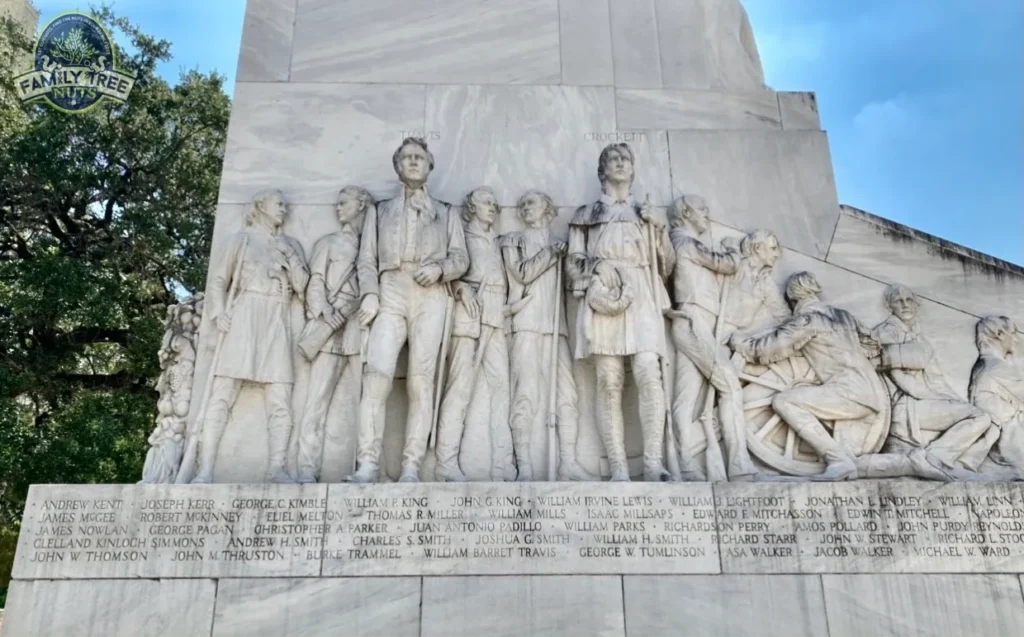
In Texas, Davy swore allegiance to the provisional government in exchange for some land. In his last letter to his family dated January 9, 1836, he reassured them of his good health, and he referred to Texas as “the garden spot of the world with cheap prospects for good land”. A few weeks later, he and his Tennessee Volunteers went on down to San Antonio, and arrived at the Alamo Mission, which was really in dire straits because it was about to be attacked by the Mexican army. In one of the last letters that Lieutenant Colonel William Barrett Travis sent to Sam Houston, he said the honorable Davy Crockett was seen out amongst the men, encouraging them to do their duty and to fight the Mexican army.
Soon thereafter, on March 6, 1836, the Mexican army laid siege to the Alamo, and all of the Texan combatants were killed. Historians say that Davy Crockett, and all of the other man held out for 13 long days and they were great sharpshooters because of what they had learned when they crossed the mountains and became frontiersman. Contrary to the popular account of his death in the movie “The Alamo”, a Mexican officers diary surfaced in 1955 that really gives an accurate account of what happened there when they were all killed. The diary states that Davy and a few other men were found in a room in one of the cabins, where they were interrogated, and then they were put to the sword, as General Santa Ana had promised. Immediately those bodies were burned out in front of the Alamo, but it wasn’t long before the Texans returned, and the Mexican army could not hold the Alamo long.
When the Mexican army evacuated the area, the Texans found a pile of burned ashes in front of the Alamo, and they could tell that that had been the bodies of the combatants that had been killed there. They took those ashes and they put them in a coffin, and they buried it under the altar of the San Fernando Cathedral, which is located in San Antonio. In 1936, that coffin was unearthed accidentally as they were doing some work there at the mission. The coffin holding the remains of the heroes is on display today.

After Davy Crocketts death, the Republic of Texas gave 640 acres to his widow and she moved there with the children until her death in 1860. She is buried under a statue of her shading her eyes, looking out to the west for her husband Davy Crockett, who stayed gone most of her life. Davy and Elizabeth’s son, Colonel Robert Patton Crockett died in 1889 and is also buried there.
Today, there are interesting artifacts that belong to Davy Crockett, and a lot of historical information about his life, that can be seen at the Tennessee State Museum, in downtown Nashville. At the museum you can see the check for $240 that the State of Texas sent the Crockett family, in 1837, to compensate them for his service. The museum also displays a knife and a powder horn that was unearthed at one of his homesteads in Tennessee, a portrait of Davy, and a wealth of historical information about his life.
Our story of Davy Crockett ends here, but he lives on as an American folk hero. Did you know that during the Cold War, the American army built a nuclear missile system and named it the “Davy Crockett Nuke”? And… he killed the bar when he was only three. Well, at least that’s what he said. Be sure to see our video from Davy’s birthplace at the link below.
– Scott Denney, Historian, Family Tree Nuts
